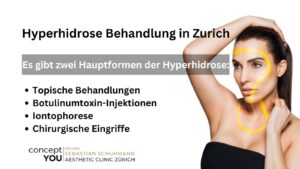The Essential Guide to Safe Welding Practices in IOSH MS
Welding is a crucial process in many industries, but it comes with its own set of risks and safety challenges. For professionals looking to enhance their skills and knowledge in welding safety, the IOSH MS (Managing Safely) course offers comprehensive training tailored to meet these needs. This guide will explore the best practices for safe welding within the framework of the IOSH MS course, focusing on critical safety measures and considerations.
Understanding IOSH MS and Its Relevance to Welding
The IOSH MS course is designed to provide managers and supervisors with a thorough understanding of workplace safety, including specific practices relevant to welding. By covering essential safety principles, the course equips participants with the tools needed to manage and mitigate welding risks effectively. One key benefit of the IOSH MS is its focus on practical, actionable advice that can be applied directly to various welding environments.
Key Components of Safe Welding Practices
Welding safety involves a combination of proper procedures, equipment maintenance, and personal protective measures. The IOSH MS course highlights several critical areas to ensure welding operations are conducted safely:
1. Proper Training and Certification
Ensuring that all personnel involved in welding are adequately trained is fundamental to safety. The IOSH MS course provides detailed instruction on safety management, which includes the proper training of welders. Obtaining relevant certifications not only ensures compliance with safety standards but also reduces the risk of accidents.
2. Personal Protective Equipment (PPE)
Using the right PPE is crucial in welding to protect against hazards such as intense light, heat, and fumes. The IOSH MS emphasizes the importance of wearing appropriate gear, including welding helmets, gloves, and protective clothing. Regular checks and maintenance of PPE are essential to ensure their effectiveness.
3. Ventilation and Fume Control
Welding produces harmful fumes that can pose serious health risks. The IOSH MS course covers best practices for ventilation and fume extraction. Implementing proper ventilation systems and using fume extractors help minimize exposure to hazardous substances, protecting the health of workers.
4. Safe Equipment Use
Regular maintenance and inspection of welding equipment are vital to prevent malfunctions that could lead to accidents. The IOSH MS highlights the need for rigorous equipment checks and adherence to manufacturer guidelines. Proper training on equipment use and troubleshooting is also covered in the course.
Managing Risks and Ensuring Compliance
Effective risk management is a cornerstone of the IOSH MS course. Identifying potential hazards and implementing control measures is essential for a safe welding environment. The course provides tools for conducting risk assessments and developing safety plans tailored to welding operations.
1. Risk Assessments
Regular risk assessments help identify potential hazards associated with welding. The IOSH MS course teaches participants how to conduct these assessments and implement control measures to mitigate risks. Ensuring that risk assessments are updated regularly is crucial for maintaining safety.
2. Safety Procedures and Protocols
Developing and enforcing safety procedures is critical in managing welding risks. The IOSH MS course guides participants in creating comprehensive safety protocols, including emergency response plans and incident reporting procedures. Adhering to these protocols helps ensure a safe working environment.
3. Compliance with Regulations
Compliance with relevant safety regulations is essential for avoiding legal and financial repercussions. The IOSH MS course provides insights into regulatory requirements related to welding and helps participants understand how to comply with them effectively.
Evaluating the Cost and Benefits of IOSH MS
When considering the IOSH MS course, it is important to weigh the costs against the benefits. The IOSH Certificate Fee varies depending on the provider and location. Investing in the course can lead to significant long-term benefits, including reduced accident rates, improved safety standards, and enhanced skills for managing welding safety.
1. Cost Considerations
Understanding the IOSH Certificate Fee is important for budgeting and financial planning. While the fee may vary, investing in the course is a valuable step toward ensuring workplace safety. Consideration of the long-term benefits, such as reduced insurance costs and fewer incidents, can justify the initial expense.
2. Long-Term Benefits
The benefits of completing the IOSH MS course extend beyond immediate safety improvements. Participants gain valuable skills and knowledge that contribute to a safer working environment and improved overall productivity. The long-term advantages of enhanced safety and compliance can outweigh the initial cost of the IOSH Certificate Fee.
Conclusion
Safe welding practices are crucial for protecting workers and maintaining a secure working environment. The IOSH MS course offers comprehensive training and practical tools for managing welding safety effectively. By understanding and implementing the key practices covered in the course, organizations can significantly reduce risks and enhance safety standards. Investing in the IOSH MS course not only ensures compliance with safety regulations but also contributes to the overall well-being of employees and the success of welding operations.














Post Comment